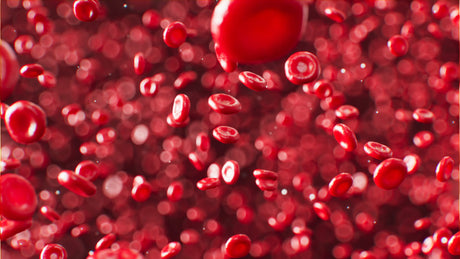Introduction
Back pain is among the most common ailments worldwide, affecting millions of people across all age groups. Whether it's caused by long hours of sitting, poor posture, muscle strain, or a medical condition, the search for effective and non-invasive relief is ongoing. One treatment that's getting a lot of attention lately is red light therapy (RLT). But does it live up to the hype? This article dives deep into the science, benefits, and real-world effectiveness of red light therapy for back pain.
What is Red Light Therapy?
Red light therapy, also known as low-level laser therapy (LLLT) or photobiomodulation, involves exposing the body to low wavelengths of red or near-infrared light. This isn’t the same kind of light you’d find in a tanning bed or UV lamp. Instead, these wavelengths are known to penetrate the skin and stimulate healing at a cellular level.
There are two main wavelengths commonly used:
-
Red light (620–750 nm): Targets skin-level tissues.
-
Near-infrared light (750–1200 nm): Penetrates deeper to muscles and joints.
How Red Light Therapy Affects the Body
When red or near-infrared light is absorbed by the cells, it enhances mitochondrial function—the powerhouse of the cell. This leads to increased production of adenosine triphosphate (ATP), which fuels cellular repair and regeneration.
Key benefits at the cellular level include:
-
Reduced inflammation: Calming overactive immune responses that contribute to pain.
-
Improved blood circulation: Enhancing oxygen and nutrient delivery.
-
Accelerated tissue repair: Especially important in muscle strain or injury.
Understanding Back Pain
Back pain isn't one-size-fits-all. It can be acute (short-term) or chronic (lasting longer than three months). Common causes include:
-
Muscle strains or sprains
-
Herniated discs
-
Degenerative disc disease
-
Spinal stenosis
-
Poor posture or ergonomics
Traditional treatments often include over-the-counter medications, physical therapy, massage, and sometimes surgery. While effective, these solutions may carry side effects or offer only temporary relief.
Scientific Evidence Behind Red Light Therapy for Back Pain
Several studies have explored the efficacy of red light therapy for musculoskeletal pain:
-
A 2021 meta-analysis published in Pain Research and Management found that LLLT significantly reduced chronic lower back pain compared to placebo.
-
A study in the Journal of Clinical Laser Medicine & Surgery demonstrated improvement in back function and pain reduction among subjects treated with red light.
However, many researchers caution that while results are promising, larger, long-term studies are still needed to solidify conclusions.
Benefits of Red Light Therapy for Back Pain
Here’s what makes RLT a compelling option:
-
Non-invasive: No needles or surgery involved.
-
Drug-free: Avoids dependence on pain medications.
-
Targeted treatment: Can be focused on specific areas of discomfort.
-
Minimal side effects: Rarely causes more than mild warmth or redness.
Real-Life Case Studies and Testimonials
Many individuals have reported significant relief from back pain using red light therapy. For instance, John, a 48-year-old office worker, shared that after three weeks of consistent RLT sessions, his lower back stiffness reduced by nearly 70%. Similarly, physical therapists are increasingly integrating RLT devices into rehabilitation programs for enhanced outcomes.
Comparing Red Light Therapy to Other Treatments
| Treatment | Invasiveness | Cost | Side Effects |
|---|---|---|---|
| Red Light Therapy | Non-invasive | Moderate | Minimal |
| Physical Therapy | Non-invasive | High | None |
| Pain Medications | Non-invasive | Low | Potential side effects |
| Surgery | Invasive | Very High | Significant |
Red light therapy shines in its ability to be both cost-effective and non-disruptive to daily life.
At-Home Red Light Therapy Devices
Several FDA-cleared home-use devices are available. These include handheld wands, wearable belts, and full-body panels. Reputable brands include Joovv, PlatinumLED, and Mito Red.
When using at home:
-
Always follow manufacturer guidelines
-
Avoid overuse (sessions typically last 10–20 minutes)
-
Keep the light source at the recommended distance
What to Expect During a Session
A typical session involves sitting or lying comfortably while the light is applied to the back area. Most people feel a gentle warmth. Sessions are painless and usually last 10–20 minutes.
Potential Risks and Contraindications
While generally safe, RLT is not for everyone. Avoid use if:
-
You’re pregnant without doctor approval
-
You have active cancer in the treatment area
-
You suffer from light sensitivity disorders
Always consult your healthcare provider before beginning treatment.
Who Should Consider Red Light Therapy?
Ideal candidates include:
-
People with chronic muscle-related back pain
-
Those seeking natural, non-drug solutions
-
Patients in post-operative recovery
-
Desk workers suffering from postural pain
It may be less effective for severe structural issues like spinal deformities.
How Long Before You See Results?
Some users feel relief within a few sessions, while others may take a few weeks. Factors influencing results include:
-
Pain severity
-
Frequency of treatment
-
Device power and consistency
Consistency is key for optimal results.
Cost of Red Light Therapy
| Type | Cost Range |
|---|---|
| In-clinic sessions | $30–$100 per session |
| Home devices | $150–$1,200 one-time |
While the upfront cost of home devices may seem high, they’re more affordable in the long run.
Red Light Therapy and Lifestyle Integration
To maximize the benefits:
-
Maintain good posture
-
Engage in light stretching or yoga
-
Follow a balanced diet
-
Stay hydrated
These habits work synergistically with red light therapy.
Expert Opinions and Recommendations
Dr. Emily Harrison, a licensed physiotherapist, says:
"Red light therapy is a promising adjunct for chronic back pain. It's not a cure-all but can be an excellent part of a comprehensive recovery plan."
Frequently Asked Questions
1. Can I use red light therapy every day?
Yes, daily use is typically safe, but follow your device’s guidelines.
2. Is red light therapy approved by the FDA?
Many red light therapy devices are FDA-cleared for pain relief.
3. Does red light therapy work for sciatica?
It may help relieve inflammation and muscle tension associated with sciatica.
4. How deep does red light penetrate?
Red light penetrates a few millimeters; near-infrared light goes deeper (up to 5 cm).
5. Are there any age restrictions?
Generally safe for all adults; children should use it under supervision.
6. Can I combine it with other therapies?
Absolutely. It complements physical therapy, massage, and chiropractic care well.
Conclusion: Does Red Light Therapy Really Work for Back Pain?
Red light therapy isn’t a miracle cure, but for many, it provides tangible, drug-free relief from stubborn back pain. Backed by emerging research and glowing reviews from users and professionals alike, it's a tool worth exploring—especially if you're looking for a natural and non-invasive approach to healing.
While more studies are needed to fully understand its capabilities, current evidence suggests that red light therapy for back pain really does work—for the right candidate, in the right context.









